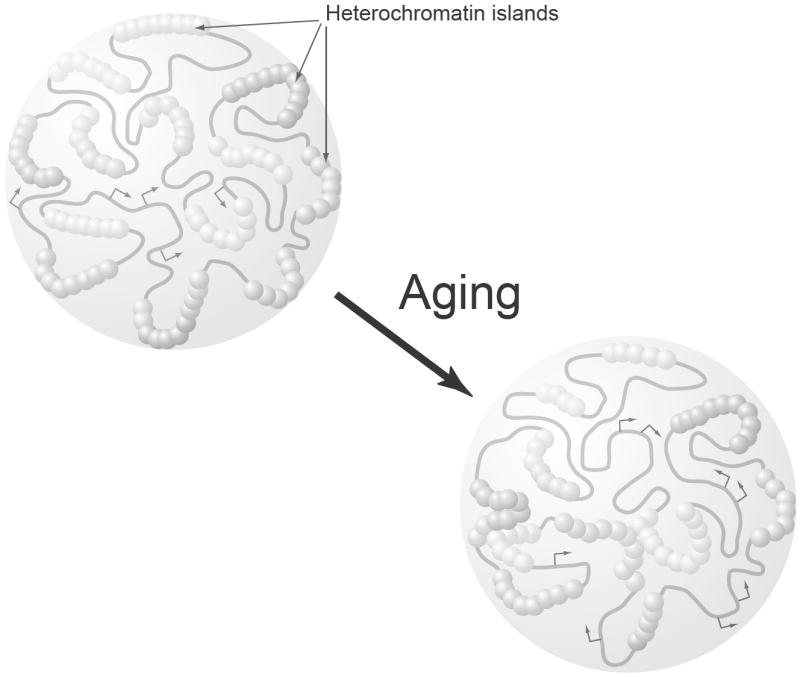Figure 1.

A schematic diagram of the heterochromatin island hypothesis. Heterochromatin islands are defined as global transcriptional repressive chromatin structures that are formed by many repeated functional units and inherited through cell division cycles, but displaced in a stochastic manner. Heterochromatin islands are formed at various loci across the mammalian genome, as depicted as complexes of particles. In the process of aging, protein components of heterochromatin islands are dissociated or redirected to other loci due to DNA damage and/or other systemic alterations, resulting in both silencing and desilencing of gene expression at specific loci (Arrows represent transcribed regions).
